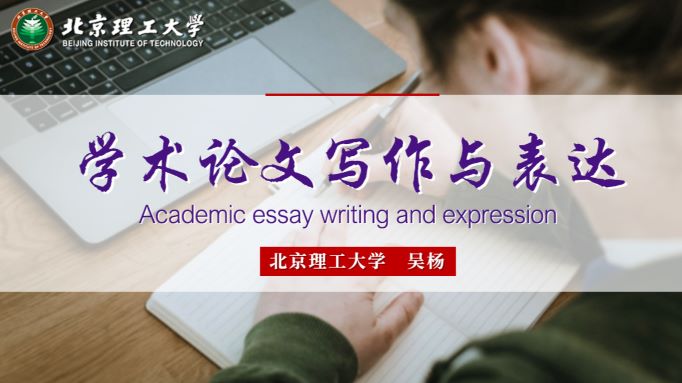
当前课程知识点:经济法学 > 第六章 金融法 > 6.3中央银行法律制度 > 第六章第三节
同学们大家好
hello everyone
我们来学习下
let's study
中央银行法
central bank law
想必
presumably
大家对中央银行已经有了一些认识
you already have some understanding of the central bank
知道中央银行在一个国家金融体制当中呢
the central bank is
处居于核心地位
the core of a country's financial system.
它可以制定和执行国家货币
it can formulate and implement national monetary
金融政策
and financial policies
实施金融调控和金融监管
implement financial regulation and financial supervision
在现代社会中
in modern society
它一般具有发行的银行
it generally has the important functions of issuing bank
银行的银行
bank of banks
政府的银行等重要职能
bank of government and so on
虽然叫法不同
although the names are different
比如
for example
中央银行
central bank
国家银行
national bank
储备银行
reserve bank
人民银行
people's bank of china
有的国家是直接冠以国名
some countries directly name banks as countries
但是它在国家中的地位
but their status and functions in the country
和职能基本相同
are basically the same
中央银行法呢
as for central bank law
就是
it is
确立中央银行的性质
to establish the nature
地位
status
和职能
and function of the central bank
规范中央银行的组织和活动的法律规范
and to standardize the organization and activities of the central bank
从法律性质看
from the point of view of legal nature
中央银行法
the central bank law
兼具公法和私法的特点
has the characteristics of public law and private law
属于经济法范畴
and belongs to the category of economy law
我们提到过中央银行的
we mentioned the
监管职能
supervision function of the central bank
中央银行作为国家最重要的
as the most important financial management
金融管理机构
institution of the country,
它代表国家进行金融管理
the central bank carries out financial management
制定执行各项金融政策
formulates and implements various financial policies on behalf of the country
对经济领域实行监管和调控
supervises and regulates the economic field
它始终要把国家的宏观经济发展
and always puts the country's macroeconomic development
放在首位
in the first place
也就是说
in other words
中央银行的目标不是实现盈利
the goal of the central bank is not to achieve profitability
而是实现国家的宏观经济目标
but to achieve the country's macroeconomic goals
这也是中央银行
this is also the biggest difference between the central bank
与其他商业银行的最大区别
and other commercial banks
举个例子
for example
同学们
let’s say
我们把钱存到商业银行
when we deposit money in commercial banks
商业银行利用信用创造的功能
the commercial banks will enlarge the basic currency
会把基础货币放大
by using the function of credit creation
形成一个叫做m2的广义货币
to form a broad currency called m2
如果不是由于存款准备金率的要求
if it were not for the requirement of the reserve ratio
这个货币数量会惊人
the amount of money would be astonishing
并难以控制
and difficult to control
当然
of course,
我们不能让它无限地增长
we can't let it grow indefinitely.
在它的背后有个机构控制着
there is an institution behind it.
它就是中央银行
it is the central bank
那下面我们就来了解一下中央银行的
now let's get to know the central bank’s
职能和作用
functions and roles
首先第一个
first of all
中央银行具有货币发行的权力
the central bank has the power to issue money
在一个社会里
in a society
谁有权力发行货币
whoever has the power to issue money
谁就能够享有一种很重要的特权
can enjoy a very important privilege
那就是无中生有地
that is, the privilege of occupying
凭空占有一定社会资源的特权
certain social resources out of thin air
中国人民银行法
the second paragraph of article 2
第二条第二款规定
of the law of the people's bank of china stipulates that
中国人民银行在
the people's bank of china shall
国务院的领导下
under the leadership of the state council
制定和执行货币政策
formulate and implement monetary policies
规范和化解金融风险
regulate and resolve financial risks
维护金融稳定
and maintain financial stability
在第四条当中规定
according to article 4,
中国人民银行可以发行人民币
the people's bank of china can issue RMB
管理人民币流通
and manage the circulation of RMB
货币其实是中央银行代表政府
in fact, currency is a debt guarantee issued by
对外的一个债务担保
the central bank on behalf of the government
这个债务
this debt
可以在不同的主体之间流通
can be circulated among different subjects
只要政府存在
as long as the government exists
只要货币在流通
as long as the currency is in circulation
它永远不需要兑换
it will never need to exchange
他发行货币的时候所承诺
the resources it promised to exchange
要兑换的那些资源
when it issued the currency
但是
however,
这个货币可以
this currency can be
在不同的社会主体之间流通
circulated among different social subjects
满足资金融通和交易结算等
to meet the commercial and non-commercial needs
商业和非商业的需要
such as financing and transaction settlement
第二个
second
中央银行以国家实力
the central bank maintains currency credit
维持货币信用
with national strength.
这时候你一定会问
at this time, you must ask
那发行货币
isn't issuing currency
不是一门只赚不赔的生意吗
a business that only makes money but doesn't lose money?
表明上看是的
it appears that way
实质上
but in essence
国家是要承担责任的
the state is to be held responsible
一个国家要发行一种
it is not easy for a country to issue
人人都愿意使用的货币
a currency that everyone is willing to use
他要建立这种信用本身
it is not easy for a country
就不是一件容易的事情
to establish such a credit.
他要把国力做得
it is necessary for the country to make its national
足够强大
strength strong enough.
人们相信哪怕是在危难的时期
so that people believe that even in times of crisis
身上揣的这些货币
the currency they have
也会被别人所认可的
will be recognized by others
要做到这一点
it's not easy
那可不容易
to do that.
更重要的是
more importantly
如果有哪个国家
if any country
有哪个地区
or region
胆敢假冒制造
dares to fake
你这个国家的货币
the currency of your country
你要拥有军事能力
you need to have the military capability
足够把他们拿下
to take them down,
维持这种军事的威慑
and maintaining this military deterrence
本身就有巨大的成本
has huge costs. in itself
你可以想想美国和美元
you can think of the united states and us dollar
美元是世界流通的第一大货币
us dollar is the largest currency in circulation in the world
你再去看看美国
then you can see how much the united states
在军事上的开支是多少
spends on military affairs
美国到处驻军的原因是什么
and why the united states is garrisoning troops everywhere
对了
that's right
主要是维持美元的霸主地位
the main thing is to maintain the dominance of us dollar
第三个
third
中央银行如何控制货币发行量
how does the central bank control the currency circulation
和流通量
and circulation amount
中央银行是怎么控制一个国家的
how does a central bank control a country’s
货币发行和流通量的呢
currency issuance and circulation amount
比如说
for example
说在美国印钱的过程是这样的
the process of printing money in the united states is like this
首先由美国的中央银行
first, the central bank of the united states
也就是联邦储备局
aka the federal reserve
批准
approves
美国的政府
the government of the united states
也就财政部
aka the ministry of finance
就可以印钱了
to print money
印出来的钱叫
the printed money is called
联邦储备券
federal reserve notes
这个券印好了以后
after this notes are printed
美国财政部
the treasury department
就把它等价卖给联邦储备局
sells it to the federal reserve
卖完以后
after the sale
出售所得
the proceeds of the sale
就存入了美国财政部
are deposited
在联邦储备局所开的账户上
in an account opened by the u.s. treasury at the federal reserve
从此美国财政部
from then on, any expenditure made by the u.s. treasury department
做任何的开支
can be incurred
都可以发生在这个账户上
in this account
你注意下这个过程
pay attention to the process
联邦储备局
the federal reserve asks
让财政部印钱
the treasury department to print the money
财政部印好了
the treasury department prints the money
以后就卖给联邦储备局
and sells it to the federal reserve
卖完了以后
after the sale
联邦储备局就在
the federal reserve adds
财政部的账户上添上这么一笔
such a sum to the treasury department's account.
从此财政部就可以花钱了
from then on, the treasury department could spend money
缺钱就印
if you are short of money
印了就可以花
you can print it and spend it.
就这么一个过程
that’s the process
你可能会问
you may ask
一直这么印下去
keep printing money like this
是不是就发生通货膨胀了呢
inflation is just going to happen
是的
yes, that's right
国家不能随便想印钱就印钱
the state cannot print money at will
货币的数量
the quantity of currency
必须跟国家的财富积累数额相匹配
must be matched with the country's accumulation of wealth
也就是
that is to say
社会财富的数量与货币数量要成正比
the amount of social wealth is proportional to the amount of currency
如果社会上的货币流通数量多了
if there is more money in circulation in society
国家应该怎么办
what should the country do
国家可以通过两个方式调整
the country can adjust it in two ways
第一叫公开市场操作
first one is the open market operation
它在公开市场上面买卖国家的债券
which deals in the national bonds on the open market
从而向市场发放或者回收货币
so as to issue currency to the market or recover from it
比如
for example
中国人民银行向公众购买
when the people's bank of china purchases
中国的国债
chinese government bonds from the public
买的过程中就把钱交给了公众
it gives the money to the public
交给了市场
and the market in the process
于是就增加了人民币
thus increasing the circulation amount of rmb
在市场中的货币流通量
in the market.
如果它倒过来向公众出售中国国债
if it sells chinese government bonds to the public in reverse
那么就回收
it will recover
市场中流通的人民币
the rmb circulating in the market
从而起到紧缩
thus tightening
人民币流通量的作用
the circulation amount of rmb
这就发生了常说的
this is the often said
放松银根和紧缩银根
relaxing money and tightening money
这两种情况
cases
控制货币发行量的另外一个办法
another way to control the circulation amount of currency
是调整利率
is to adjust the rate of interest
利率不一样
if the interest rate is different
人们借贷的行为
people's lending behavior
就会发生变化
will change
这对市场流通的货币量
on the amount of currency circulating in the market
也会有影响
which will also have an impact
货币流通
currency circulation
对利率的变化非常敏感
is very sensitive to the change of interest rate
利率高
high interest rate
借贷减少
leads to the decrease of loan
利率低
low interest rate
借贷增加
leads to the increase of loan.
以此呢也可以控制
this can also be used to control
社会流通的货币数量
the amount of currency in circulation
当然
of course
中央银行还可以修改法定存款准备金比率
the central bank may also modify the statutory deposit reserve ratio
从而影响商业银行创造货币的倍数
so as to affect the multiple of money created by commercial banks
或者叫乘数
or be called a multiplier
这种方法用的少一些
this method is less used
但是非常有效
but it is very effective
在特殊的时候也会采用
and can be used in special cases
比如
for example
中国最近一次调整在2019年1月4日
china's most recent adjustment was on January 4,2019
对大型金融机构和
different proportions for large financial institutions and
中小型金融机构采取了不同的比例
small and medium-sized financial institutions have been adopted
调整后的比例分别是14%和12%
with the adjusted proportions being 14% and 12%, respectively
第四个
fourth
中央银行充当最后贷款人
the central bank acts as lender of last resort
不管怎么样
in any case
中央银行还充当一个重要的作用
the central bank also plays an important role
那就是
that is
最后贷款人的作用
the role of lender of last resort
商业银行体系
there is an inherent difficulty
本身固有一种困难
in the commercial banking system
那就是流动性的困难
that is, the difficulty of liquidity
如果储户出现恐慌
if there is panic among depositors
要把钱都取出来的话
and they want to get all the money out
整个银行体系
the whole banking system
是没有那么多钱给储户提取的
does not have so much money for depositors to withdraw
那就会发生挤兑风险
then there is the risk of a run
这时候中央银行就要发挥作用
at this time, the central bank should play a role
帮助那些有流动性困难的银行
in helping those banks with liquidity difficulties
让他们尽量满足储户的要求
to meet the requirements of depositors as much as possible
从而平息储户的恐慌
so as to calm the depositors' panic
以上所说的这些
all of the above
都是各国的中央银行
are the basic tasks for the central banks of all countries
所要完成的基本任务
to accomplish
那就是
that is
保持一个国家货币发行量的稳定
to maintain the stability of a country's currency issuance
当然我们后面还会有专门讨论
of course, we'll have a special discussion later
有些中央银行还担负着
some central banks also undertake
除了稳定货币发行量任务以外的其他任务
other tasks besides the task of stabilizing currency issuance
尤其是
in particular
调整经济发展速度
the task of adjusting the speed of economic development
保持就业稳定
maintaining employment stability
保持经济持续增长的任务
and keeping sustained economic growth
最后呢
in the end
我给大家留个思考题
i'll leave a question for you to think about
根据你的了解
according to what you know
你还知道我国中国银行
do you know what other means
还可以采用哪些手段
can be used by the bank of china
来调控金融市场
to regulate and control the financial market
好同学们这次课
okay everyone
我们就先到这
that’s all for today’s class
再见
goodbye
-1.1经济法的含义及特征
--第一章第一节
-1.2.经济法的调整对象及体系
--第一章第二节
-1.3.经济法与相邻法的关系
--第一章第三节
-1.4.经济法的产生与发展
--第一章第四节
-1.5.经济法的基本原则
--第一章第五节
-1.6.经济法主体及其类型
--第一章第六节
-1.7.经济法主体的权利、义务和责任
--第一章第七节
-1.8.经济法的制定与实施
--第一章第八节
--章节作业
-2.1反垄断法的基本问题
--第二章第一节
-2.2相关市场及其界定
--章节讨论题
--第二章第二节
-2.3垄断协议的法律规制
--第二章第三节
-2.4滥用市场支配地位的法律规制
--第二章第四节
-2.5经营者集中的法律规制
--第二章第五节
-2.6行政垄断的法律规制
--第二章第六节
-2.7反垄断法的实施
--第二章第七节
-3.1反不正当竞争法的基本问题
--第三章第一节
-3.2规制市场混淆行为
--第三章第二节
-3.3规制商业贿赂行为
--第三章第三节
-3.4规制虚假宣传行为
--第三章第四节
-3.5规制诋毁商誉行为
--第三章第五节
-3.6规制侵犯商业秘密行为
--第三章第六节
-3.7规制不当有奖销售行为
--第三章第七节
-3.8规制网络领域的不正当竞争行为
--第三章第八节
-4.1 消费者权益保护法概述
--第四章第一节
-4.2消费者的权利
--第四章第二节
-4.3经营者的义务
--第四章第三节
-4.4国家和社会对消费者权益的保护及消费者权益争议的解决
--第四章第四节
-4.5法律责任(一)民事责任主体
--第四章第五节
-4.6法律责任(二)民事责任类型
--章节作业
--第四章第六节
-5.1财税法概述
--第五章第一节
-5.2预算编制
--第五章第二节
-5.3预算审查与批准
--第五节第三节
-5.4预算执行与调整
--第五章第四节
-5.5政府采购法的适用范围
--第五章第五节
-5.6政府采购的原则与政策
--第五章第六节
-5.7政府采购程序与方式
--第五章第七节
-5.8政府采购合同
--第五章第八节
-5.9政府采购救济机制
--第五章第九节
-5.10税收法定原则
--第五章第十节
-5.11纳税人权利
--第五章第十一节
-5.12税收构成要件
--第五章第十二节
-5.13流转税法原理
--第五章第十三节
-5.14所得税法
--第五章第十四节
-5.15财产税法原理
--章节作业
--第五章第十五节
-5.16费用征收法律制度
--费用征收法律制度
-5.17公债法律制度
--公债法律制度
-5.18国有资产收益法律制度
-5.19财政监督的类型
--财政监督的类型
-5.20审计监督
--审计监督
-5.21税收法律概念
--税收的法律概念
-5.22税收的分类
--税收的分类
-5.23量能课税原则
--量能课税原则
-5.24税收效率原则
--税收效率原则
-6.1金融和金融法
--第六章第一节
-6.2我国的金融机构和监管机构法
--第六章第二节
-6.3中央银行法律制度
--第六章第三节
-6.4商业银行的法律监管
--第六章第四节
-6.5证券监管制度
--章节作业
--第六章第五节



